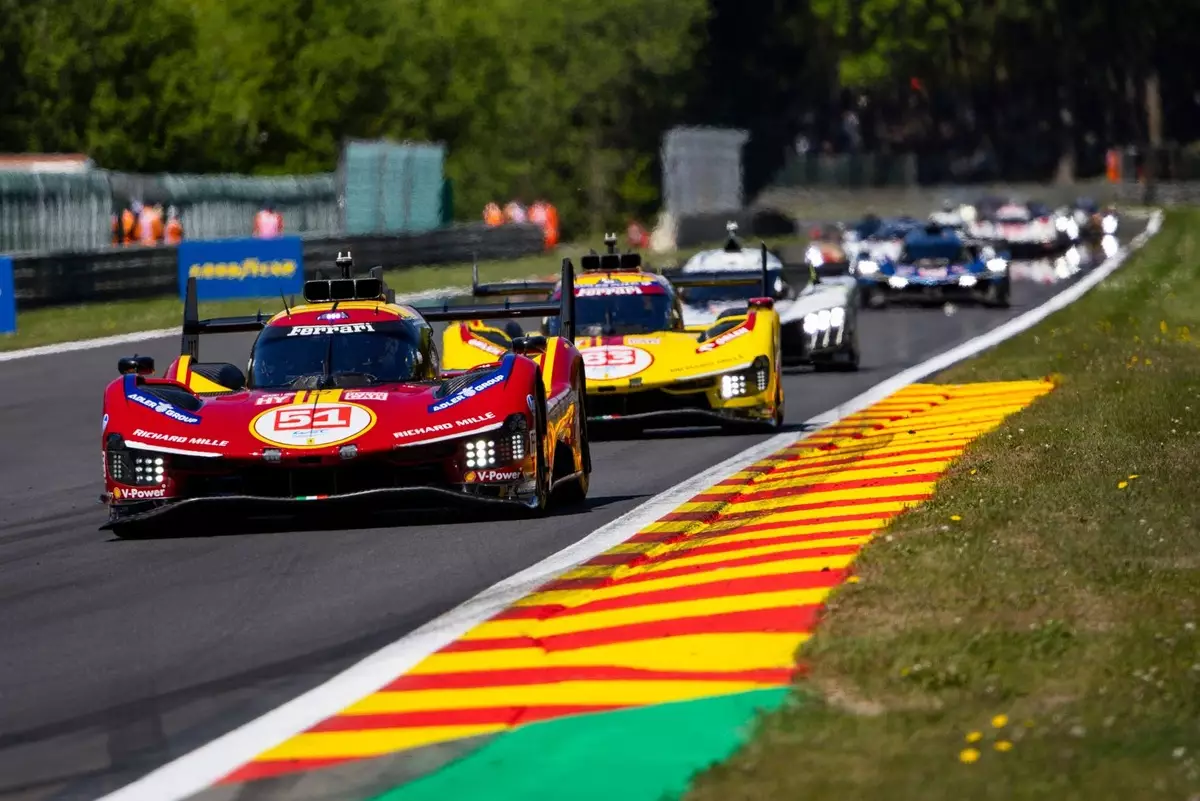The Spa-Francorchamps circuit echoed with the roar of engines as Ferrari showcased its dominance yet again at the 6 Hours of Spa, clinching victory through its powerhouse drivers James Calado, Antonio Giovinazzi, and Alessandro Pier Guidi. Their win, a mere 4 seconds ahead of the sister 499P Le Mans Hypercar, was not just a display of speed but a testament to strategic prowess on the track. With Nicklas Nielsen, Miguel Molina, and Antonio Fuoco in the second Ferrari, and Alpine’s A424 LMDh driven by the likes of Frédéric Makowiecki, Jules Gounon, and Mick Schumacher lingering just seconds behind, the race was a nail-biter that captivated motorsport fans from start to finish.
Despite a dominating performance in qualifying where all three Ferrari models secured slots in Hyperpole, the race unfolded into a gripping competition. The adversity presented by competitors from Alpine, BMW, and Peugeot kept the tension high throughout the event. It was a race where every pit stop was critical, and every decision carried the weight of the championship.
Strategic Divergence: A Tale of Two Ferraris
The strategy deployed by the two factory AF Corse Ferraris was intriguing and marked a significant turning point in the race’s narrative. After a second safety car deployment, both Ferraris entered the pits, but Pier Guidi in the #51 model was determined to overcome the 6-second deficit he faced against Nielsen in the #50 car. As the clock ticked down, the pressure mounted, transforming the race into a strategic chess match on wheels.
As the race progressed, the leaders faced unexpected challenges that altered their trajectories. After falling behind two WRT BMW M Hybrid LMDhs, Pier Guidi’s subsequent recovery drive showcased not only skill but also an aggressive, tactical mindset to regain lost time. In stark contrast, Nielsen decided to play it safe, opting for a fuel conservation strategy. This divergence had crucial implications, as Pier Guidi emerged with a commanding advantage in the final leg of the race after the last round of pit stops. The excitement for fans escalated as these dynamics shifted, exemplifying how strategy can be just as important as speed in endurance racing.
The Unpredictable Component: Mechanical Issues and Luck
As the clock progressed, it became evident that mechanical issues would play a significant role in shaping the standings. BMW, which had briefly held the lead with its #20 entry, faced heartbreak with a brake failure that forced its retirement in the final hour of the race. Meanwhile, Peugeot, also aiming for a podium finish, suffered from an unfortunate collision that ended its competitive run. These events underscored the unpredictability inherent in endurance racing, where fortune can change in an instant.
As the strategies unfolded, the emphasis on driver performance and teamwork became paramount. For Alpine, a slow puncture proved detrimental, while for BMW and Peugeot, technical failures transformed potential triumphs into lessons of survival. It was a bitter reminder that in racing, the line between victory and disaster can often be razor-thin.
The Big Picture: Implications and Future Prospects
The aftermath of the Spa 6 Hours is not just about points on a scoreboard but a significant chapter in the ongoing saga of endurance racing. Ferrari’s success serves as a resurgence narrative, reinforcing its status in the competitive landscape alongside formidable rivals like Toyota, which ultimately came in fourth despite a lackluster qualifying performance. The race concluded with the Jota Cadillacs following closely behind, highlighting the ever-changing nature of racing dynamics and team strategies.
With each race, we witness the shifting tides as teams adapt to competition, weather conditions, and unexpected challenges. The Spa 6 Hours was more than just a race; it was a microcosm of strategy, teamwork, and the relentless pursuit of excellence that defines motorsport. For fans and competitors alike, this race has set the stage for an electrifying season ahead – one where stakes are continuously raised, and the thrill of the chase remains ever-present.

